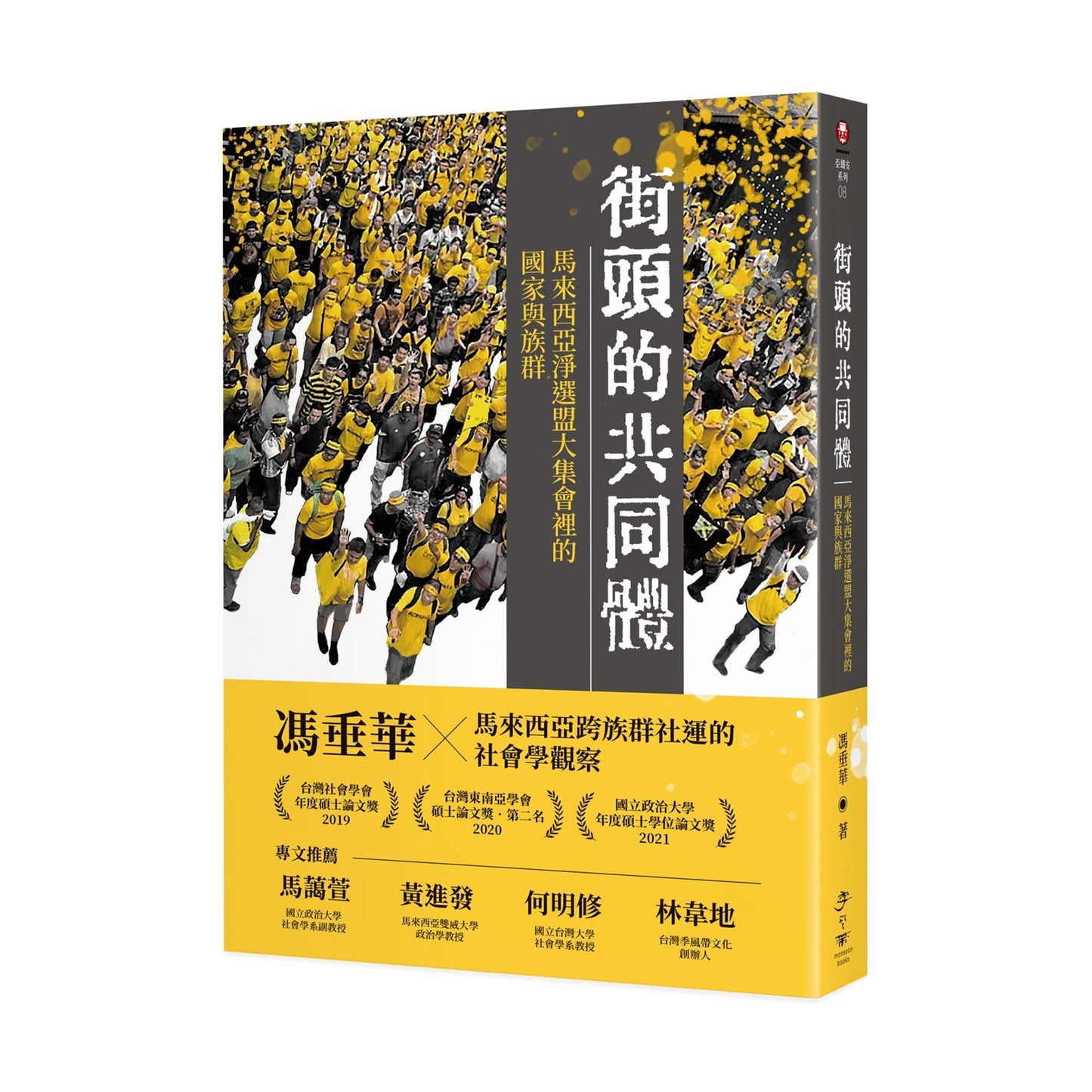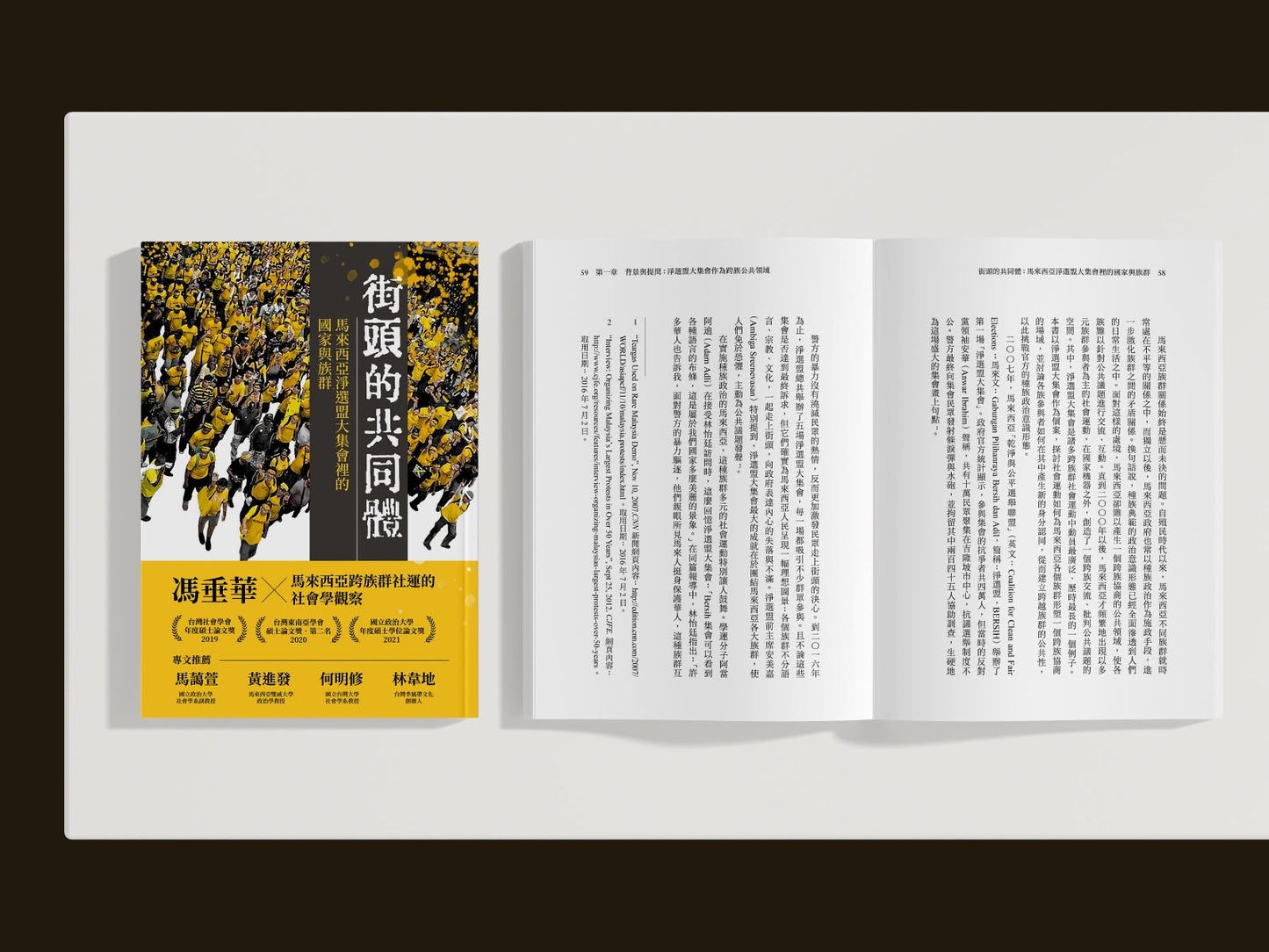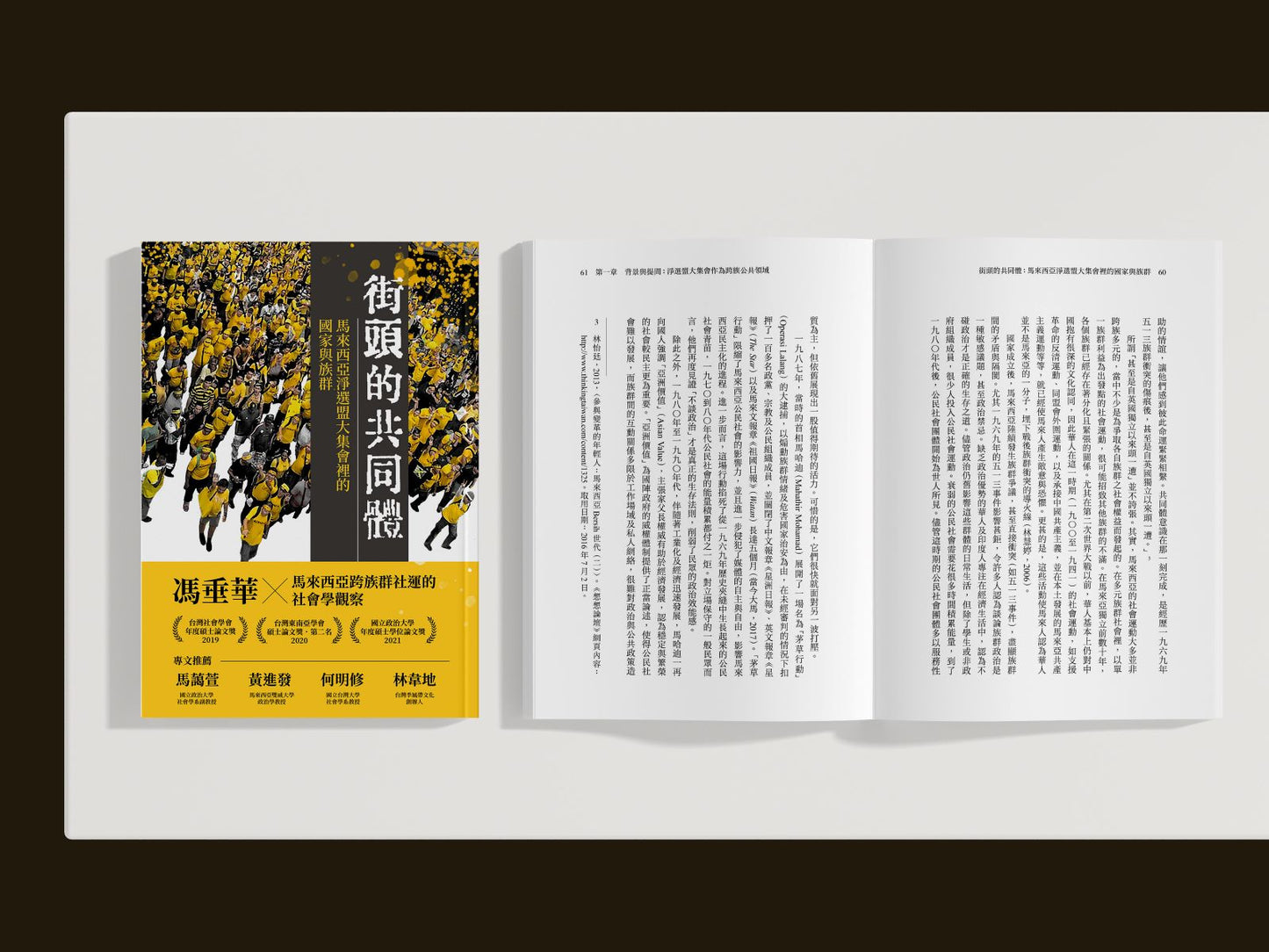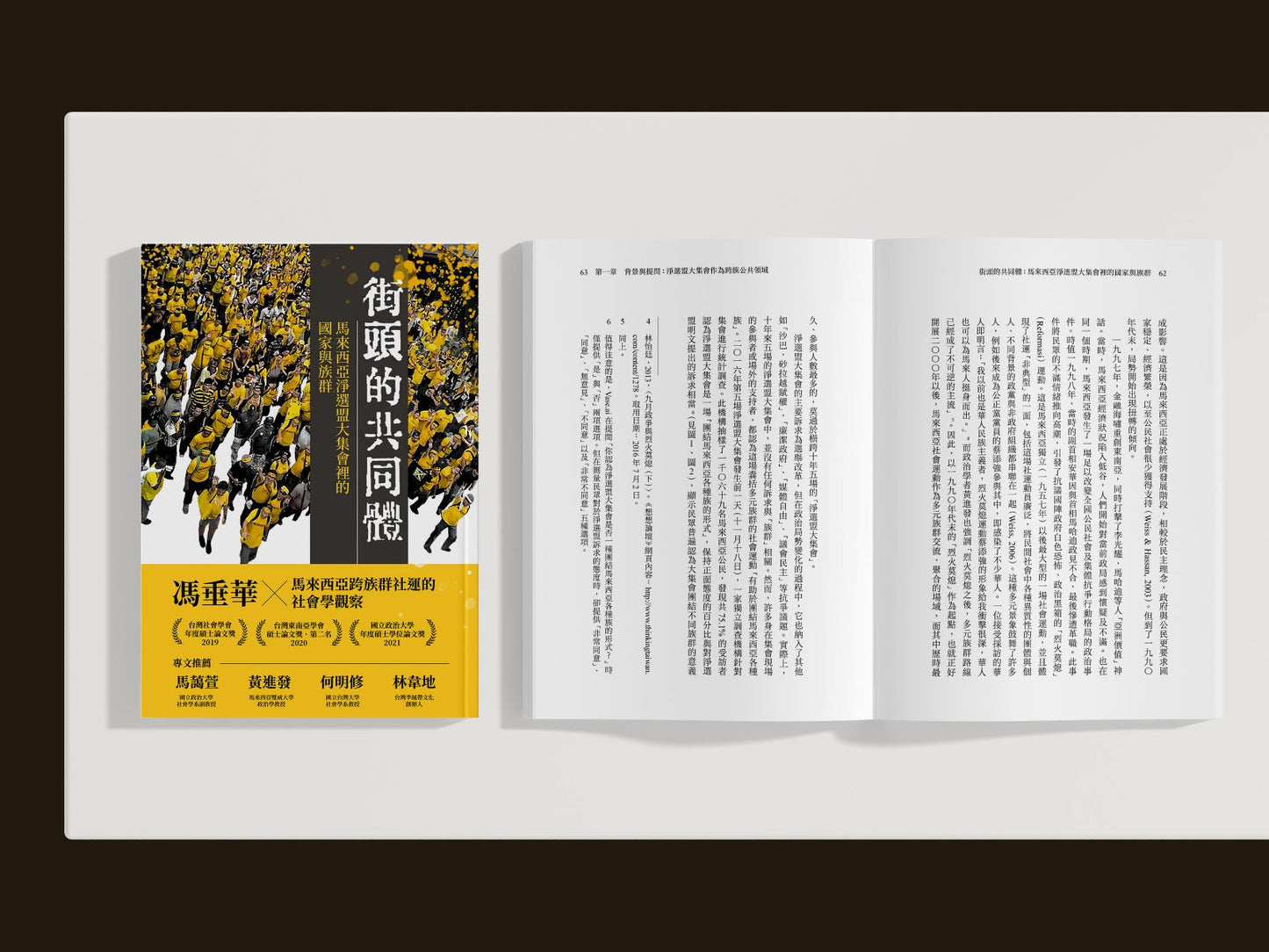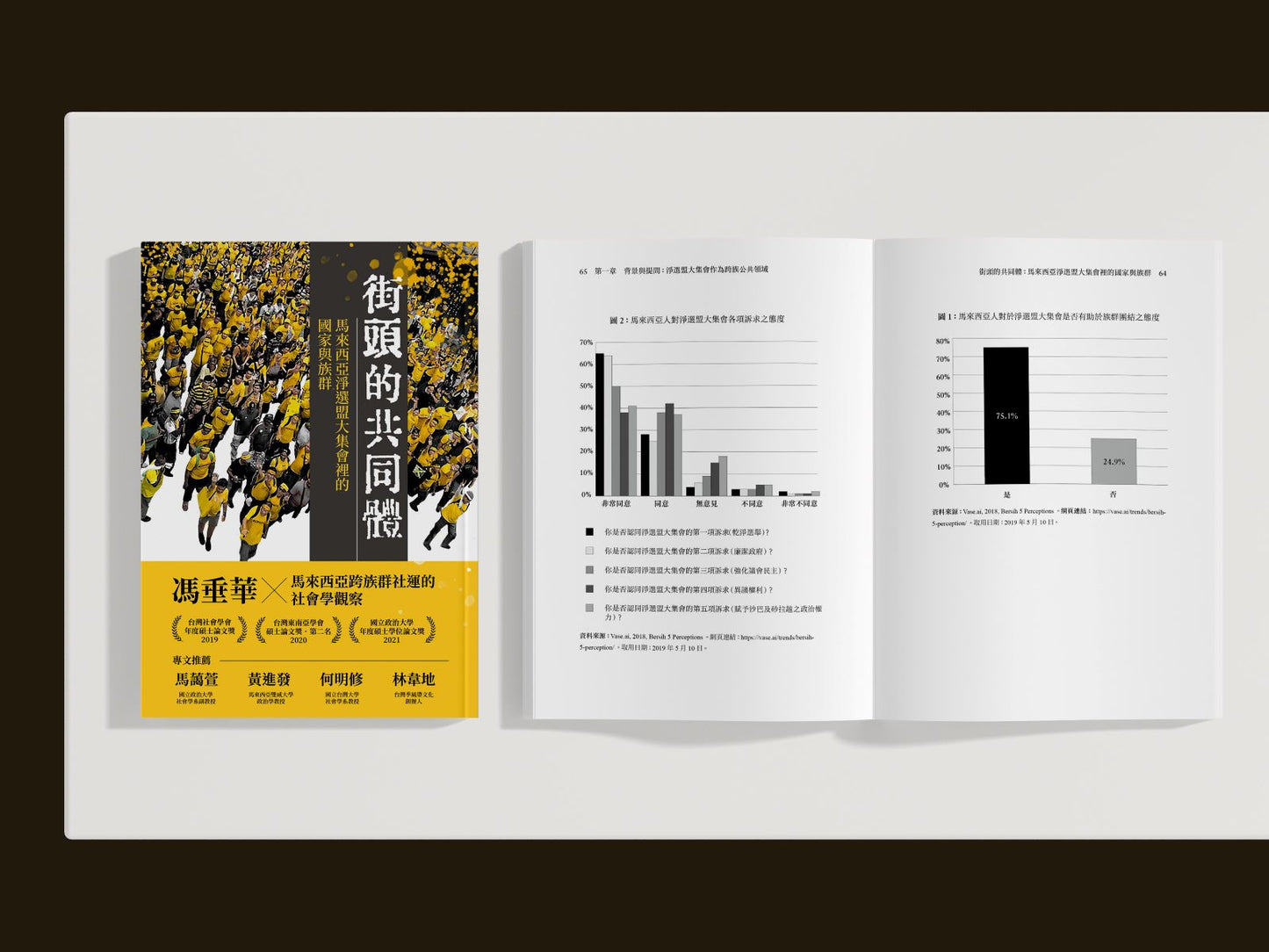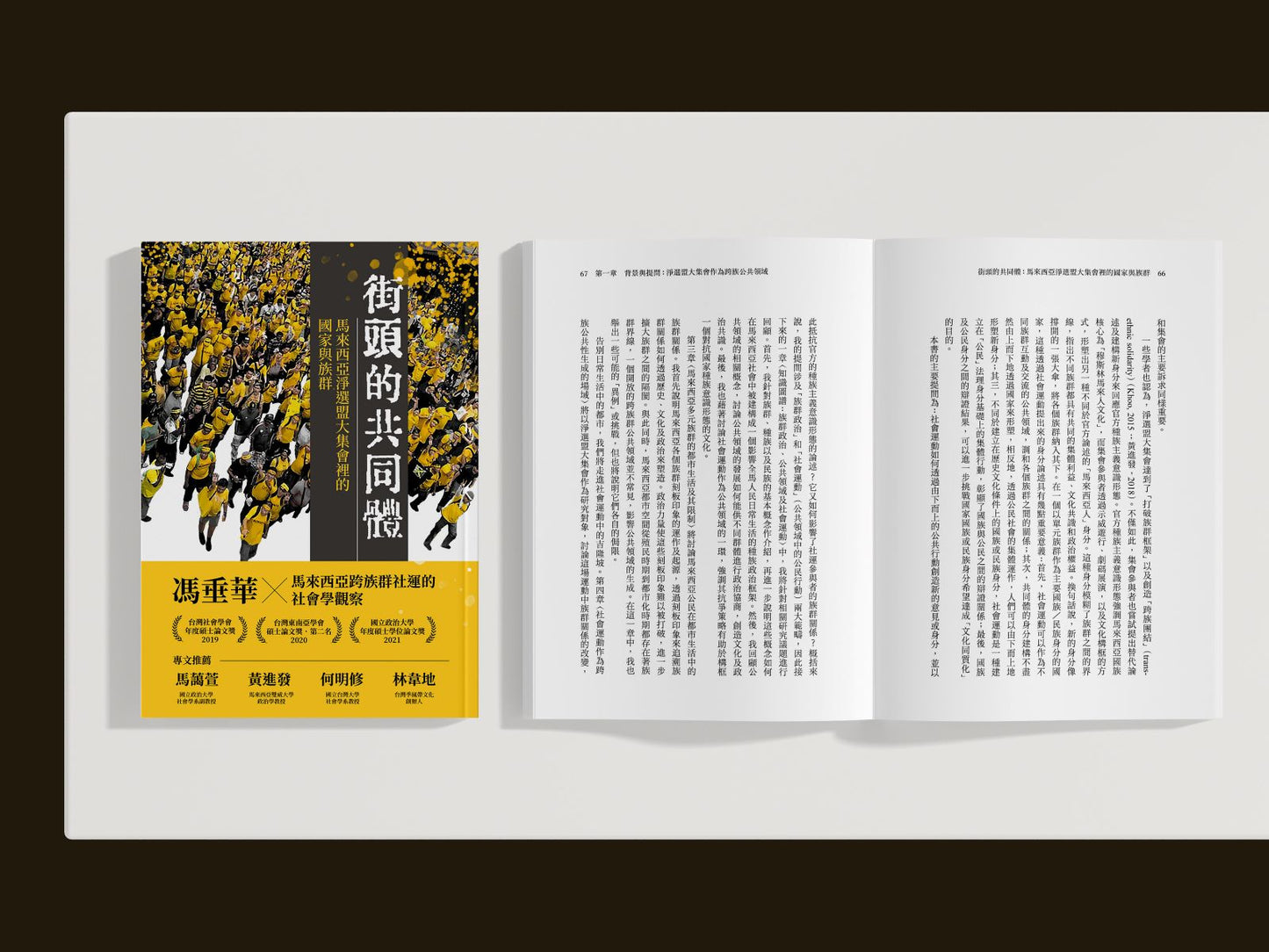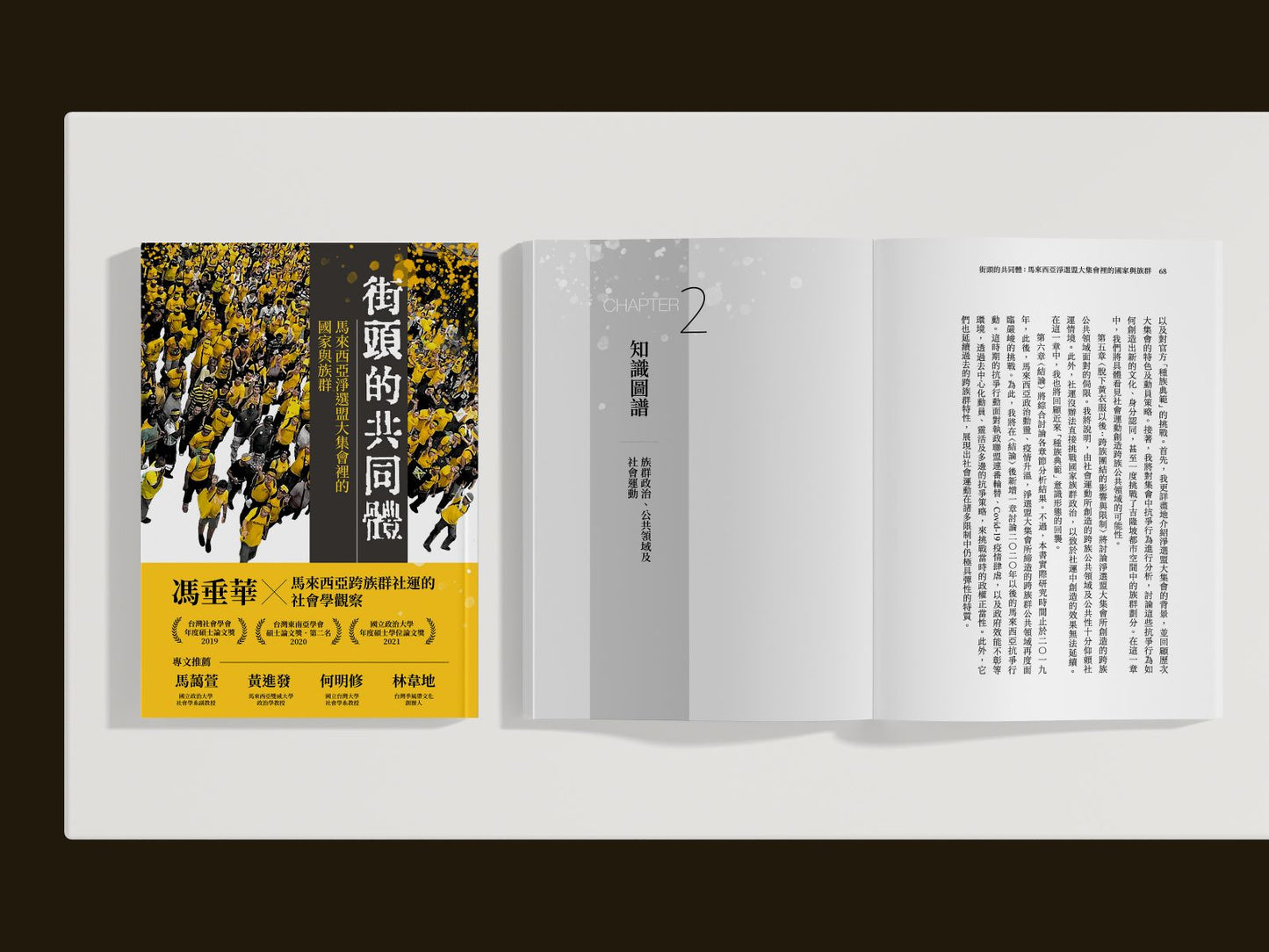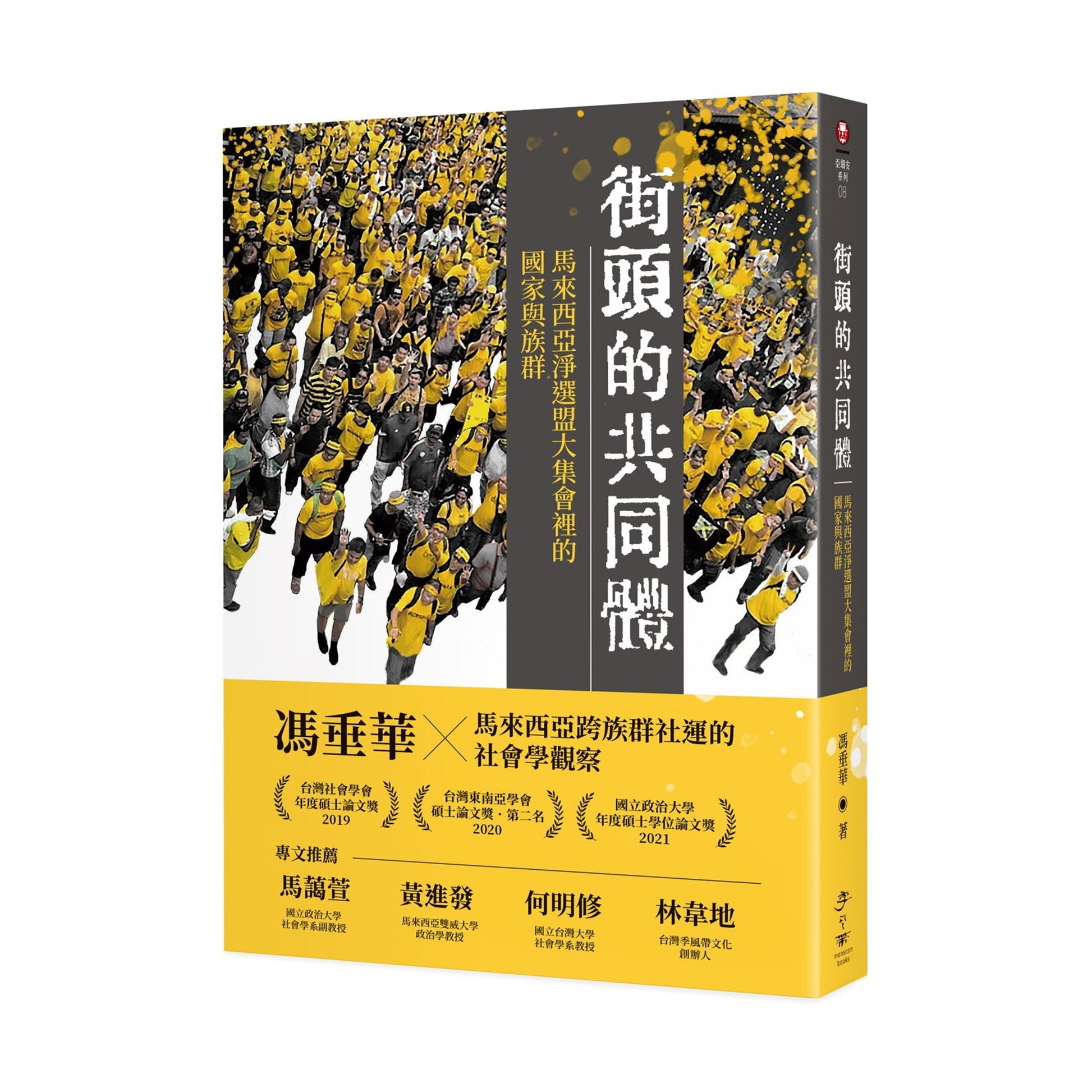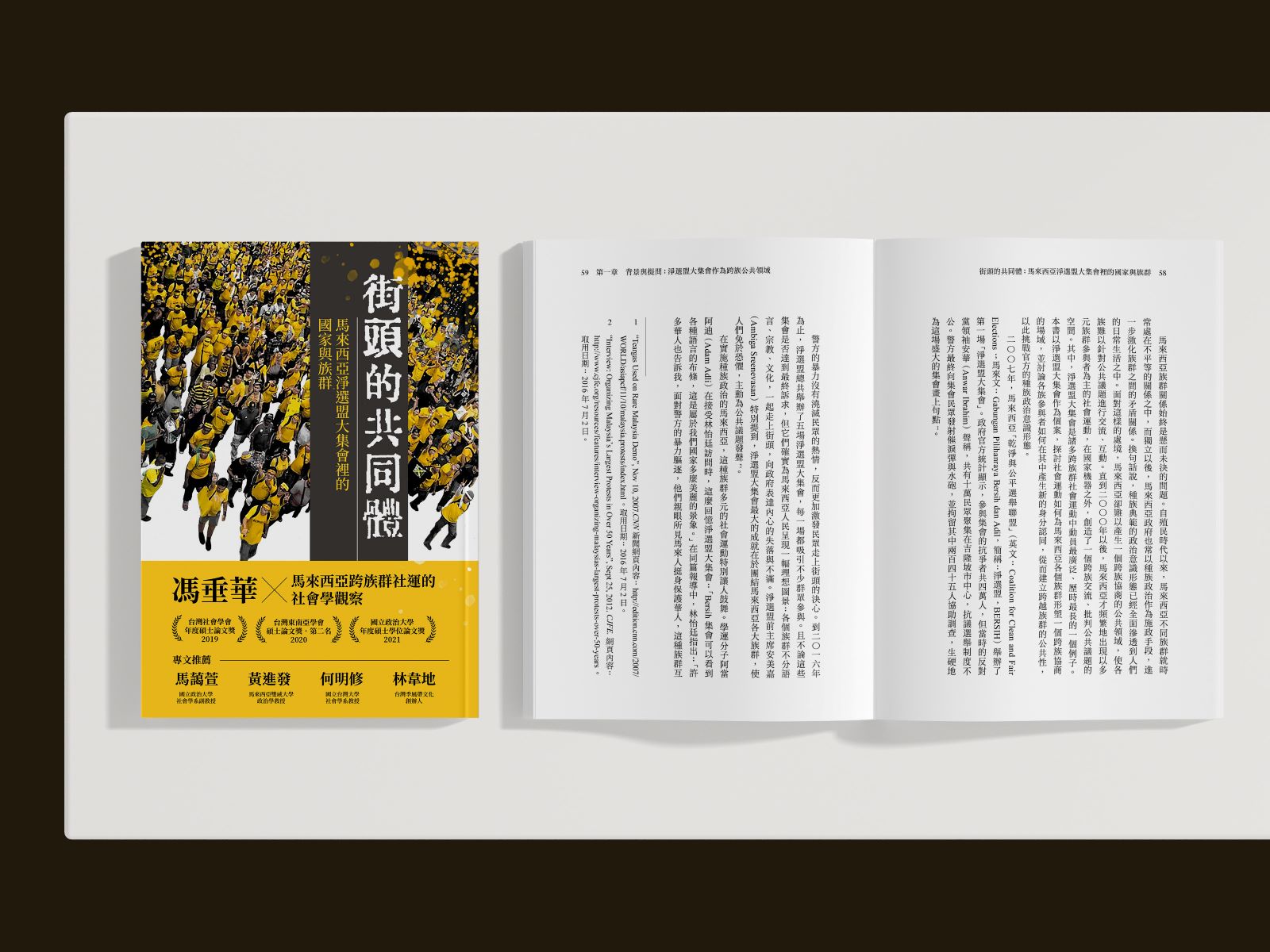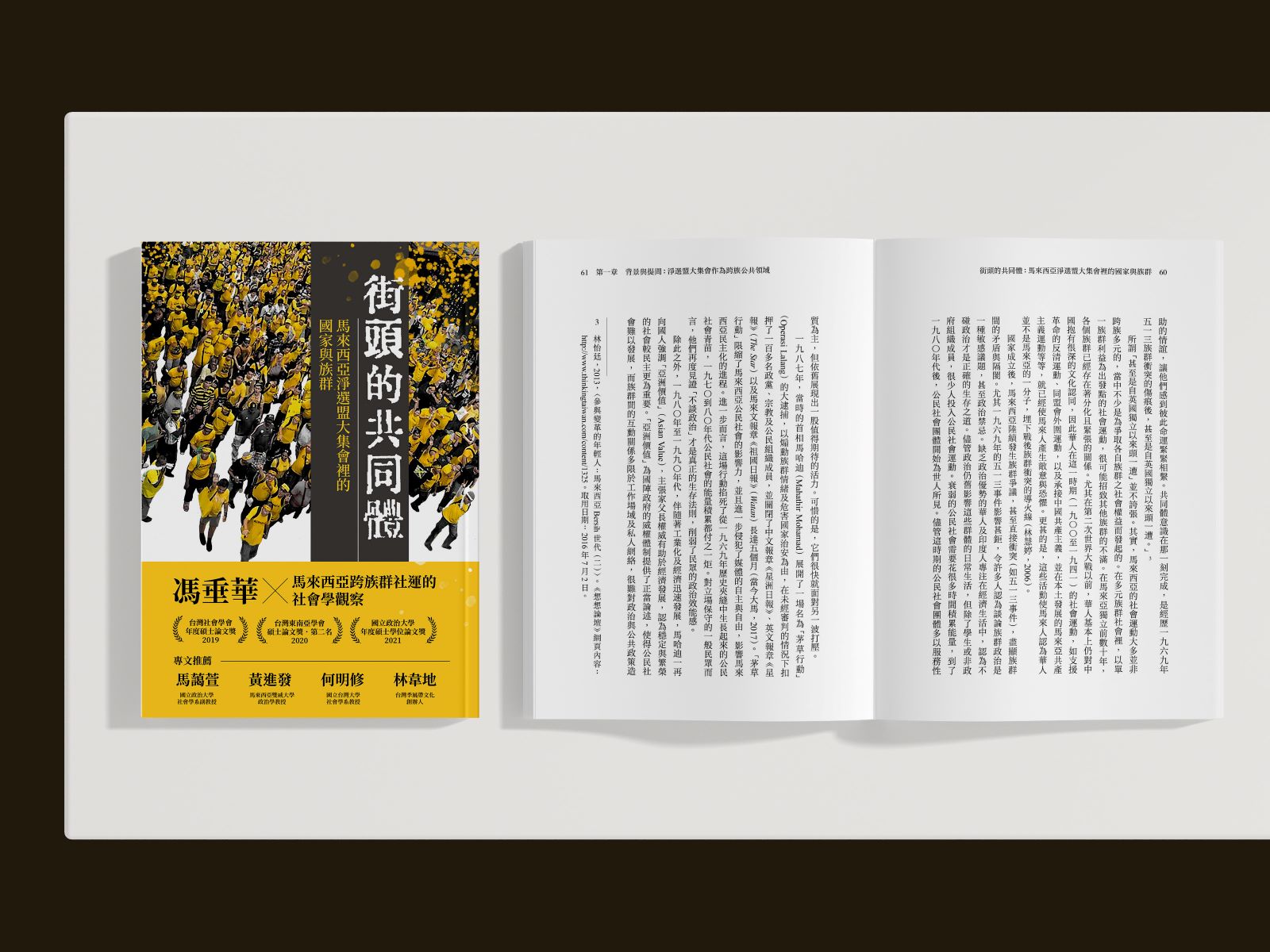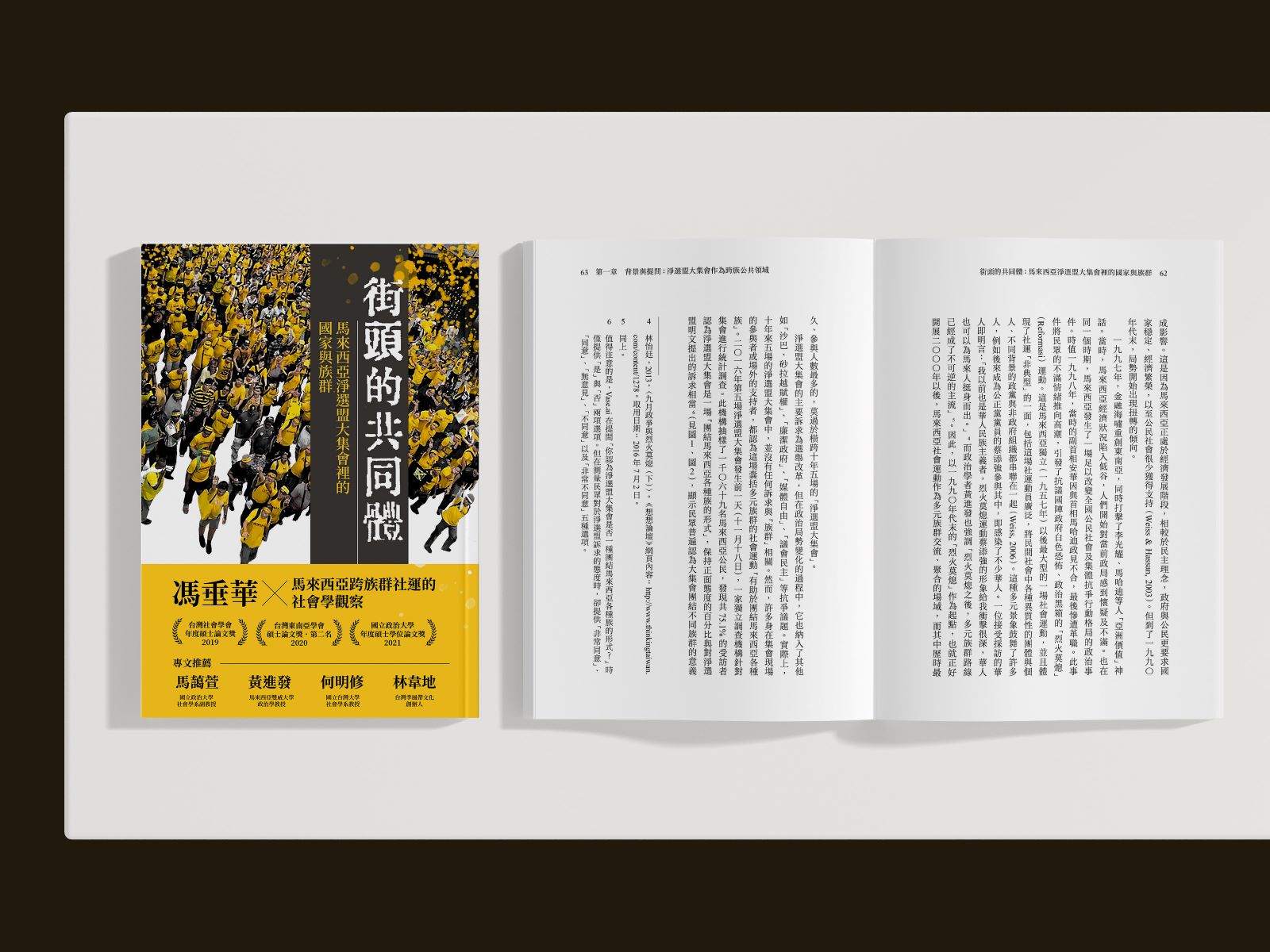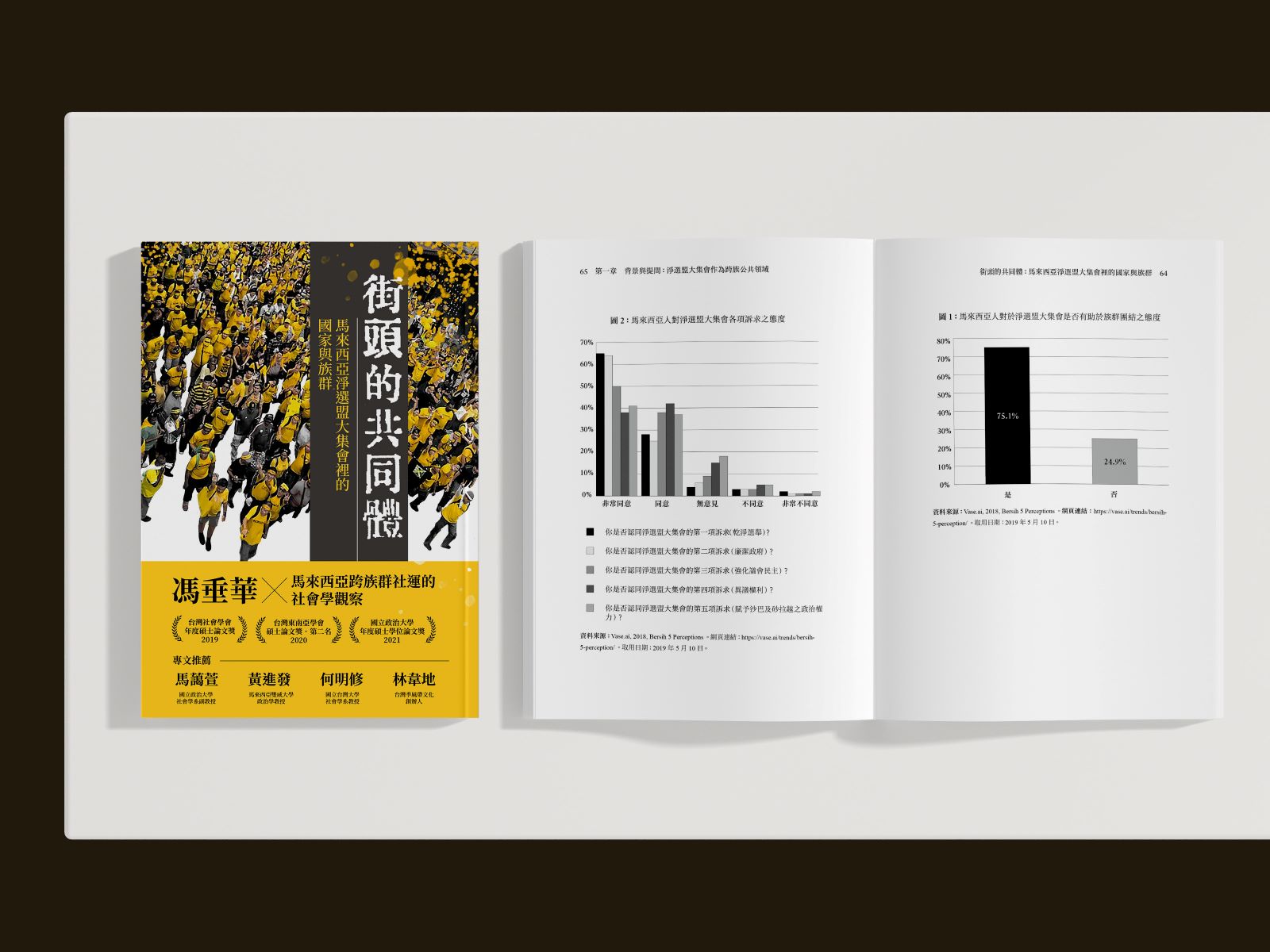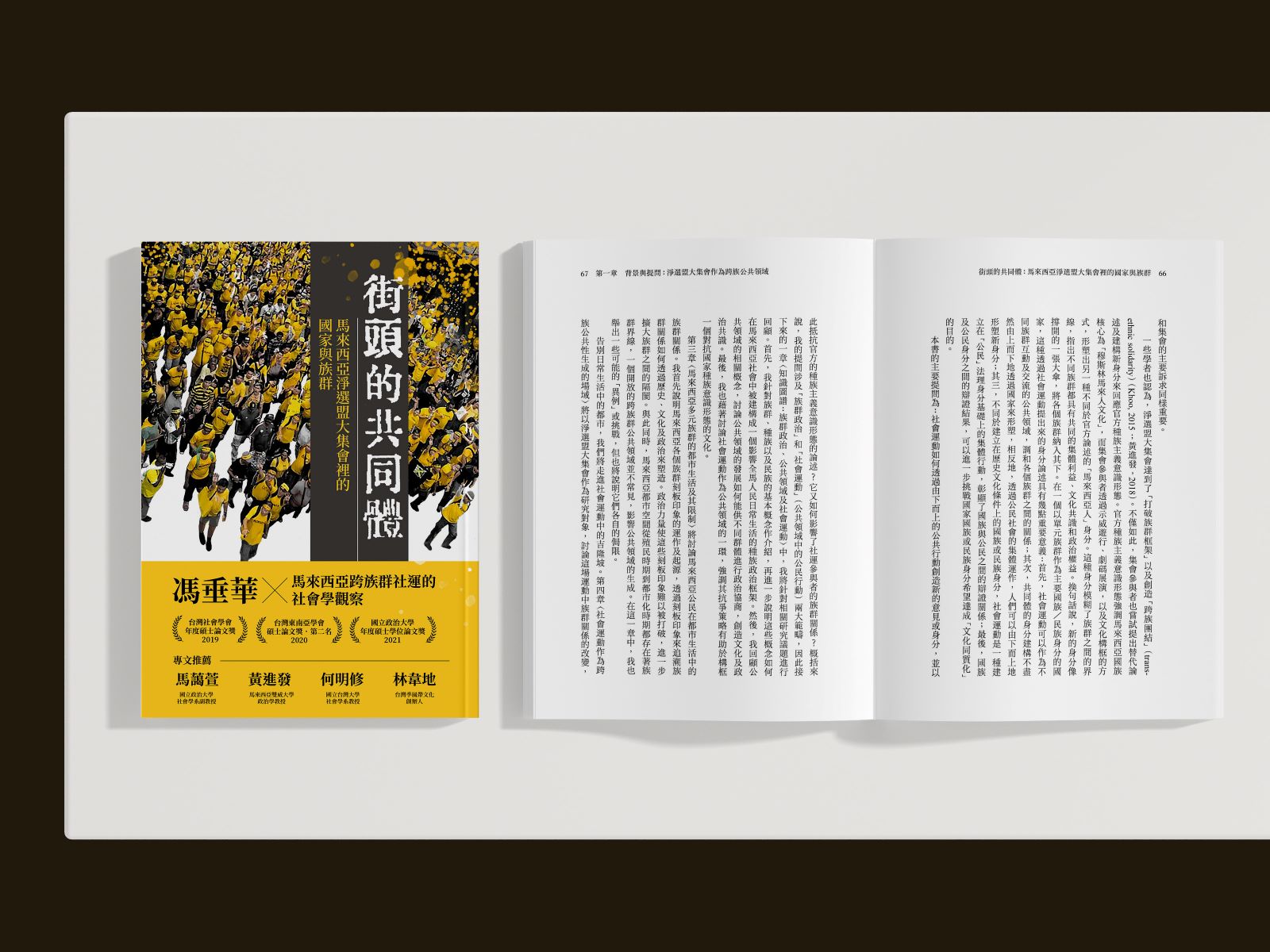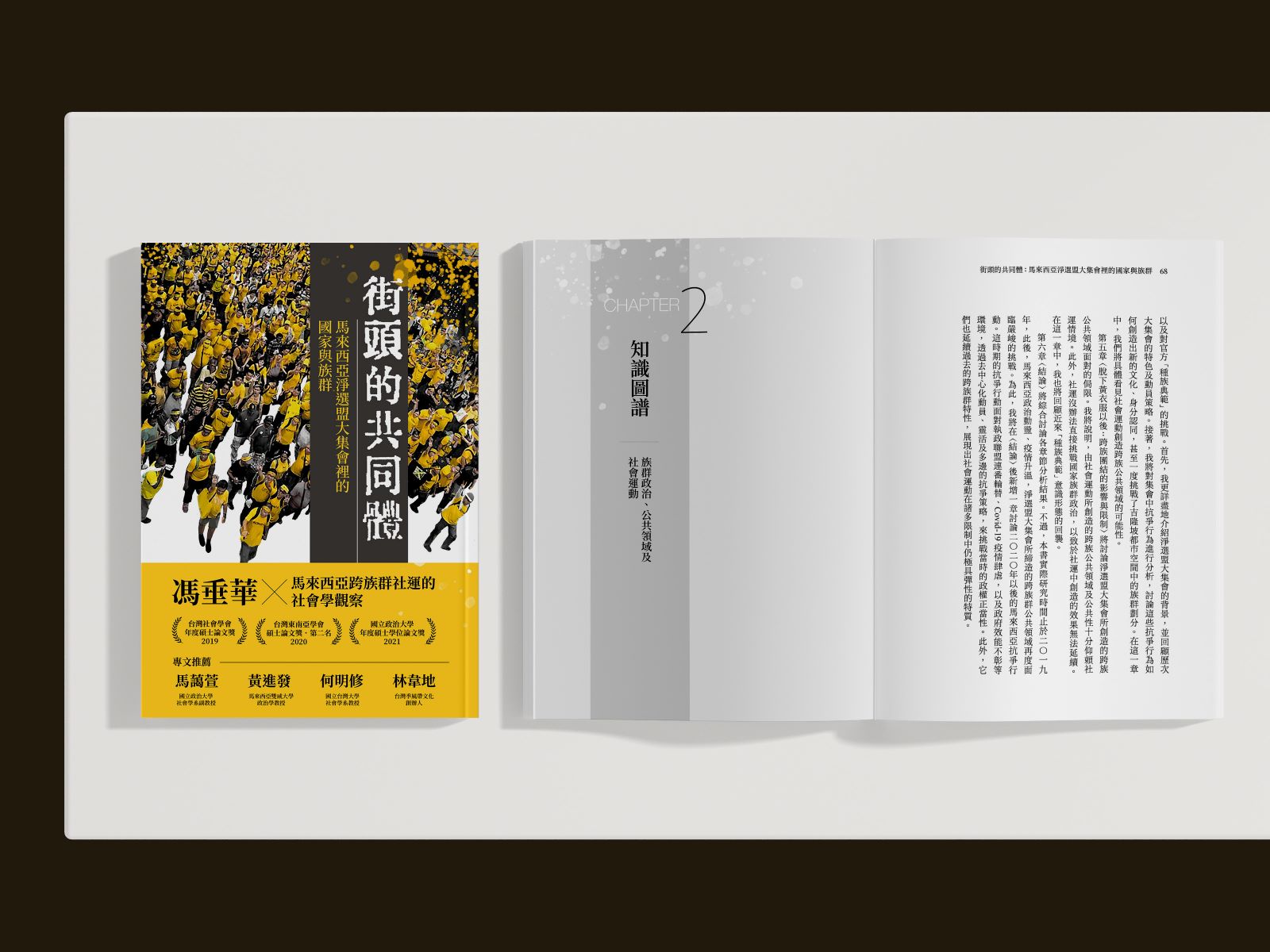Community in the Streets: Nation and Ethnicity at the Bersih Rally in Malaysia
Community in the Streets: Nation and Ethnicity at the Bersih Rally in Malaysia
10 in stock
Couldn't load pickup availability
ISBN/EAN: 9786269872718
出版日期: 2024-12-25
页数: 356页
语言: Traditional Chinese
★ This book uses sociological observations of cross-ethnic social movements in Malaysia to help more people understand the status of social movements in Malaysia;
★ The original work of this book won the Taiwan Sociological Association's Annual Master's Thesis Award (2019), the Taiwan Southeast Asian Studies Association's Master's Thesis Award (Second Place) (2020), and the National Chengchi University's Annual Master's Thesis Award (2021);
★ Recommended by Associate Professor Ma Aixuan of the Department of Sociology at National Chengchi University, Professor Huang Jinfa of Political Science at Sunway University in Malaysia, Professor He Mingxiu of the Department of Sociology at National Taiwan University, and Lin Wei-di, founder of Taiwan Monsoon Belt Culture!
"The Bersih rally was the most memorable attempt in the history of Malaysian civic movements, but also the most cautionary experience. The caution lies in the various limitations that arose from it, but it is memorable because it transformed the streets into a table, a table for interaction, dialogue and action among people of different races, genders and classes."
Since colonial times, Malaysia's different ethnic groups have often been in unequal relations. After independence, the Malaysian government has frequently used racial politics as a tool for governance, further exacerbating interethnic tensions. Political ideologies based on racial norms have permeated daily life. Faced with this situation, Malaysia has struggled to develop a public sphere for cross-ethnic consultation, hindering communication and interaction on public issues. It wasn't until after 2000 that social movements primarily involving diverse ethnic groups began to emerge in Malaysia, creating a space for cross-ethnic exchange and critique of public issues outside the state apparatus. The Bersih rally, among many other examples, was the most extensive and protracted of these cross-ethnic social movements.
This book uses the Bersih rally as a case study to explore how social movements shape a field of cross-ethnic consultation for various ethnic groups in Malaysia, and discusses how participants from various ethnic groups develop new identities within it, thereby establishing a cross-ethnic publicness and challenging the official racial political ideology.
Feng Chuihua
A doctoral candidate and adjunct lecturer in the Department of Sociology at National Chengchi University. Her research interests lie in ethnic relations, social movements, civil society, and cultural studies. Her master's thesis, "Searching for a 'Trans-ethnic Public Sphere': Ethnic Relations in the Bersih Rally in Malaysia," won the 2019 Taiwan Sociological Association's Master's Thesis Award, the 2020 Taiwan Southeast Asian Studies Association Master's Thesis Award (second place), and the 2021 National Chengchi University Master's Thesis Award. Her research has been published in Thought and Speech: A Journal of the Humanities and Social Sciences and East Asian Studies, and her other work has appeared in media outlets such as Critical Review and Corner International.
Foreword (I) Demarcation and Crossing Boundaries: Ethnic Politics, Social Movements, and Civil Society / Ma Ai-xuan (Associate Professor, Department of Sociology, National Chengchi University)
Foreword (II) The Realities of Street Romance ╱ Huang Jinfa (Professor of Political Science, Sunway University, Malaysia) 14
Foreword (III) Solidarity forged by social movements / He Mingxiu (Professor, Department of Sociology, National Taiwan University) 27
Foreword (IV) Using Academics as a Method: The Social Practice of Malaysian Literary Youth / Lin Weidi (Founder of Monsoon Culture, Taiwan) 32
Preface: A Table Enlightened by the Streets ╱ Feng Chuihua 37
Introduction to the Past and Present of Malaysia’s Ethnic Politics / Kuang Jianming (Editor-in-Chief of Taiwan Monsoon Culture) 43
Chapter 1 Background and Questions: Bersih Rally as a Cross-ethnic Public Sphere 57
Chapter 2 Knowledge Graph: Ethnic Politics, Public Sphere, and Social Movements 69
Section 1 Basic Concepts of Race, Ethnicity and Nationality 70
Section 2: The Construction of the “Racial Paradigm” in Malaysia 76
Section 3 The Challenge of the “Race Paradigm”: Other Exceptions and the Reconstruction of Identity in Everyday Life 86
Section 4 Development of the Public Sector and the Malaysian Example 95
Section 5 Social Movements as a Public Sphere 103
Section 6 Summary 109
Chapter 3 Multiethnic Urban Life in Malaysia and Its Constraints 113
Section 1 Stereotypes and Ethnic Interactions 115
Section 2 Ethnic differentiation in Kuala Lumpur’s urban space: from the era of Yap Ah Loy to independence 132
Section 3: The Multicultural and Hybrid City: Ethnic Encounters and Boundaries in Contemporary Urban Space 146
Section 4: From Spaces of Encounter to the “Transracial” Public Sphere 165
Chapter 4: Social Movements as Fields for the Generation of Transracial Publicity 179
Section 1 The Formation of Cross-ethnic Networks: Bersih Background and Mobilization 184
Background of the First Bersih Rally 184
The second part is about the ethnic composition and mobilization strategies of Bersih rallies.
Section 2 From Ethnic Space to Interethnic Space: The Formation of Interethnic Public Sphere 195
The First Choice Space: From Ethnic Space to the Square of "Independence and Freedom" 195
The Second Spatial Arrangement: Elements of Ethnic Diversity in the Protest Space 214
Section 3 Discourse and Framing in the Great Gathering: From Kingship to Citizenship and Cross-ethnic Group Identity 222
Section 4: Interaction and Collaboration among Ethnic Groups in the Mass Gathering 238
Chapter 5: After the Yellow Clothes Were Taken Off: The Impact and Limitations of Cross-ethnic Solidarity 251
Section 1: The disappearance of interethnic publicness after social movements 254
Section 2 The Return of Racial Politics 262
Chapter 6 Conclusion 275
Section 1 Racial Knowledge in the Colonial Era: State and Ethnic Relations 277
Section 2 National Spatial Governance: Definition and Construction of Urban Ethnic Space 279
Section 3 From Daily Encounters to Interethnic Public Spheres: Limitations of Interethnic Interaction in Open Spaces 280
Section 4: Social Movements as a Transracial Public Sphere: The Contributions and Limitations of the Bersih Rally 282
Section 5 Returning to Daily Life: The Fluidity and Persistence of Ethnic Identity and Social Relations 285
Supplementary Notes on Malaysia’s Protests in the Era of the Pandemic 289
I. Background and Issues 290
2. The launch of the White Flag and Black Flag struggle movement in the era of epidemics 295
Item 1: The Beginning of Civilian Self-Help: The Background of the “White Flag Movement” 295
The Second Item: Stand Up and Struggle (Keluar Dan Lawan): The Background of the Black Flag Struggle Movement 298
3. With a sense of insecurity spreading, how can we mobilize the public to participate in the struggle during the pandemic?
The First Item: From the Internet to the Home: The Mobilization Strategy of the White Flag Movement 300
The Second Item: Facing Insecurity: Mobilization Strategies of the Black Flag Struggle Movement 303
IV. The Cultural Framework of Protest Action: Government Incompetence and People’s Rights 307
Depoliticization, agency, poverty visibility, and repoliticization in the first White Flag Movement 308
A Second Day Outside Independence Square: The Cultural Framework and Drama of the Black Flag Struggle Movement 315
V. The Possibility of Civil Society in the Era of Epidemics 322
New Post: Ethnic Controversy Continues 327
Appendix Research Subjects and Research Methods 333
References 339
Share
